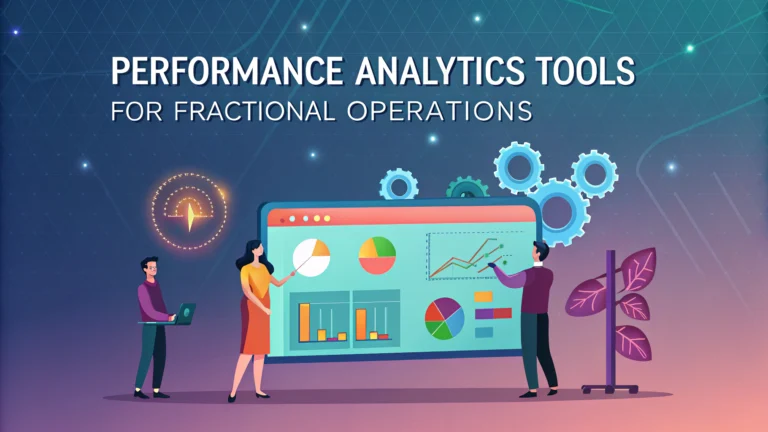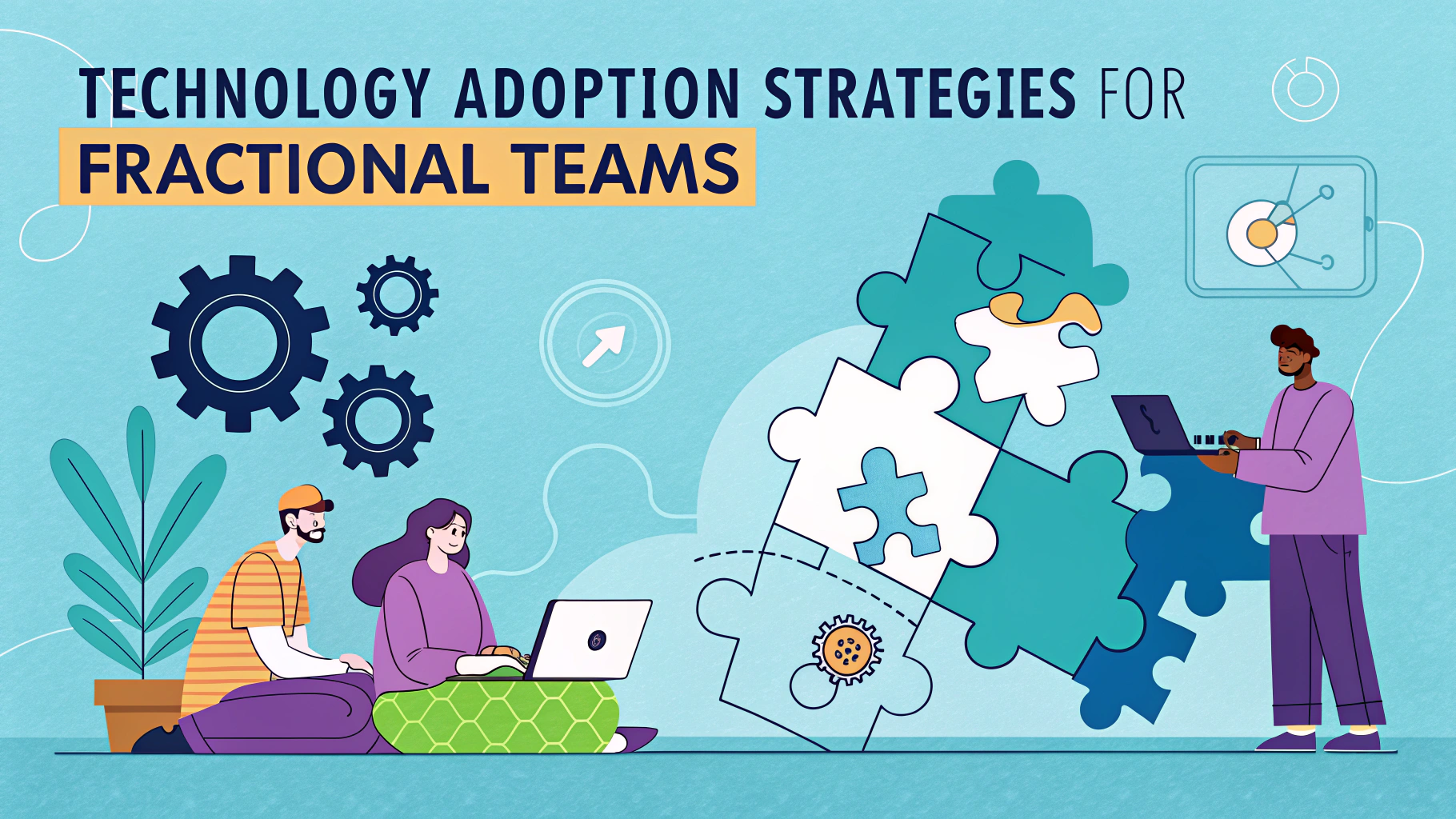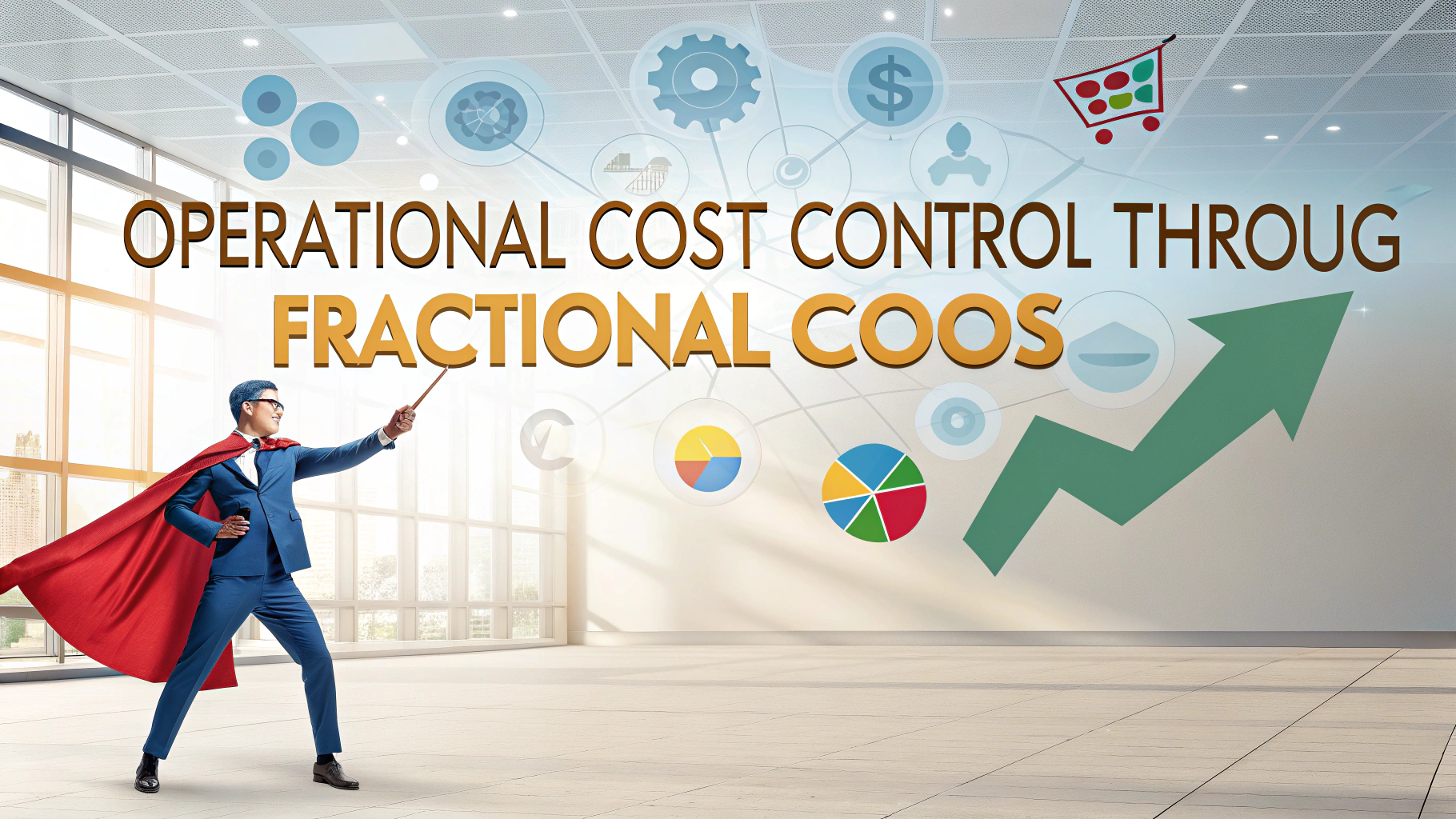Performance analytics tools help fractional COOs make data-driven decisions and optimize business operations across multiple client organizations.
These tools provide real-time insights into key performance indicators (KPIs), enabling fractional executives to identify trends, bottlenecks, and opportunities for improvement.
Selecting the right analytics tools can significantly impact a fractional COO’s ability to deliver value and drive operational excellence for their clients.
Essential Analytics Tools for Fractional COOs
- Tableau – Enterprise-grade visualization platform for creating interactive dashboards
- Power BI – Microsoft’s business analytics solution with AI capabilities
- Looker – Modern BI platform with strong data modeling features
- Sisense – AI-driven analytics platform suitable for complex data sources
- Databox – Mobile-first performance monitoring tool with pre-built templates
Key Metrics to Track
- Financial Performance (Revenue, Profit Margins, Cash Flow)
- Operational Efficiency (Process Cycle Times, Resource Utilization)
- Customer Metrics (Satisfaction Scores, Retention Rates)
- Employee Performance (Productivity, Engagement)
- Project Management (Timeline Adherence, Budget Variance)
Implementation Strategy
- Define specific KPIs for each client organization
- Set up automated data collection processes
- Create standardized reporting templates
- Establish regular review cadences
- Document insights and action items
Data Integration Best Practices
Connect multiple data sources through API integrations or data warehousing solutions like Snowflake or Amazon Redshift.
Implement data cleaning and validation procedures to ensure accuracy and reliability.
Use automated ETL (Extract, Transform, Load) tools like Fivetran or Stitch for consistent data updates.
Reporting and Dashboard Design
- Create role-specific views for different stakeholders
- Use consistent color coding and naming conventions
- Include trend analysis and forecasting capabilities
- Enable drill-down functionality for detailed analysis
- Set up automated alerts for metric thresholds
Tool Selection Criteria
| Feature | Importance |
|---|---|
| Data Integration Capabilities | High |
| Customization Options | High |
| Mobile Access | Medium |
| Cost | Medium |
| Security Features | High |
Next Steps for Implementation
Start with a pilot program using one key client to test and refine your analytics approach.
Document successful practices and create a playbook for future client implementations.
Schedule regular check-ins with stakeholders to gather feedback and adjust reporting as needed.
Analytics Resources and Support
For additional support and training, contact leading analytics platform providers:
- Tableau Support: www.tableau.com/support
- Power BI Help: powerbi.microsoft.com/support
- Looker Documentation: docs.looker.com
Advanced Analytics Applications
Predictive Analytics
- Forecast revenue and growth trends
- Anticipate operational bottlenecks
- Model customer behavior patterns
- Predict resource requirements
Process Mining
- Identify workflow inefficiencies
- Map actual vs. intended processes
- Discover automation opportunities
- Track process compliance
Change Management and Analytics Adoption
Implement training programs for stakeholders at all levels to ensure effective use of analytics tools.
Create documentation and standard operating procedures for data analysis workflows.
- Conduct regular training sessions
- Develop user guides and quick reference materials
- Establish data governance policies
- Monitor tool usage and adoption rates
Scaling Analytics Across Client Organizations
Multi-Client Management
- Develop templated analytics solutions
- Create industry-specific KPI libraries
- Implement secure data segregation
- Establish cross-client benchmarking
Maximizing Analytics ROI
Track the impact of data-driven decisions on key business outcomes:
- Document cost savings from process improvements
- Measure efficiency gains through automation
- Calculate time saved in reporting and analysis
- Monitor revenue increases from data-driven strategies
Driving Operational Excellence Through Data
Success in modern business operations requires a robust analytics foundation. Fractional COOs must leverage these tools effectively to deliver measurable value across client organizations.
Regular evaluation and updates of analytics strategies ensure continued alignment with business objectives and emerging technological capabilities.
Maintain focus on actionable insights that drive tangible business improvements and measurable ROI for client organizations.
FAQs
- What are the essential performance analytics tools for fractional COO operations?
Key tools include KPI dashboards, project management software like Monday.com or Asana, financial analytics platforms, operational efficiency trackers, and business intelligence tools like Tableau or Power BI. - How do performance analytics tools help measure operational efficiency?
These tools track metrics like process cycle times, resource utilization, throughput rates, and bottleneck identification, providing real-time insights for operational optimization. - What key metrics should a fractional COO monitor using analytics tools?
Critical metrics include operational costs, employee productivity, customer satisfaction scores, inventory turnover, supply chain efficiency, quality control metrics, and process automation rates. - How can performance analytics tools assist in resource allocation?
Analytics tools provide data-driven insights for optimal resource distribution, capacity planning, workforce scheduling, and budget allocation across different operational areas. - What role do predictive analytics play in fractional COO operations?
Predictive analytics help forecast operational needs, identify potential issues before they occur, optimize inventory levels, and plan maintenance schedules based on historical data patterns. - How do performance analytics tools facilitate remote team management?
These tools enable real-time monitoring of remote team productivity, project progress tracking, collaboration metrics, and virtual team performance analysis. - What integration capabilities should performance analytics tools have?
Tools should integrate with ERP systems, CRM platforms, financial software, HR management systems, and other operational tools to provide comprehensive data analysis. - How often should performance analytics data be reviewed by a fractional COO?
Key metrics should be monitored daily through dashboards, with detailed analysis performed weekly, and comprehensive performance reviews conducted monthly or quarterly. - What security features are essential in performance analytics tools?
Important security features include data encryption, role-based access control, audit trails, compliance monitoring, and secure data storage protocols. - How can performance analytics tools help in cost optimization?
These tools identify cost-saving opportunities through waste reduction analysis, process optimization, resource utilization tracking, and operational efficiency improvements.







